Battle of Blades: Carving Knife vs Chef Knife Pros and Cons
Table of Contents
ToggleBattle of Blades: Carving Knife vs Chef Knife Pros and Cons
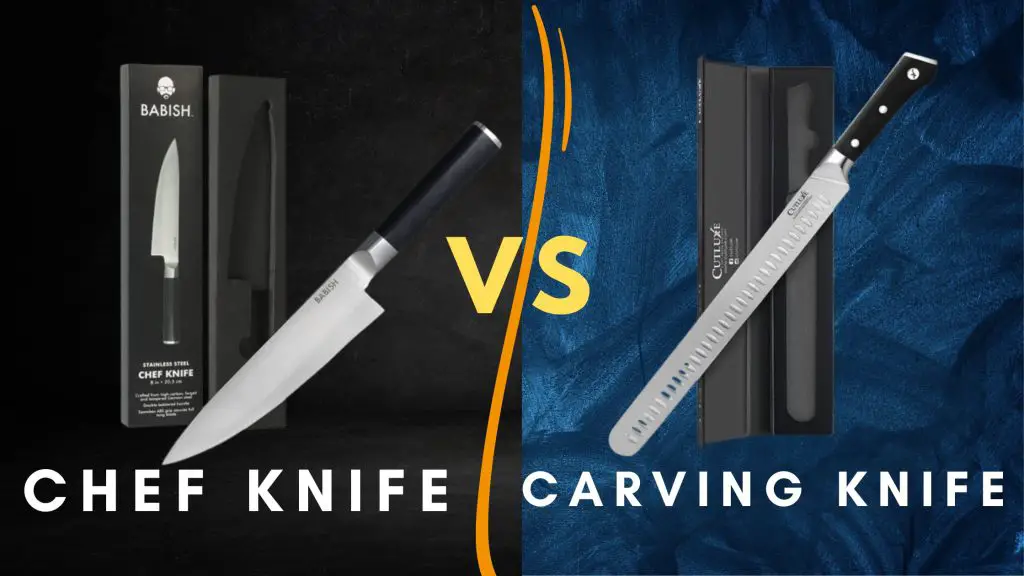
Carving knives and chef knives are two of the most commonly used knives in the kitchen. Both are essential tools for any home cook or professional chef.
While they may seem interchangeable at first glance, there are some significant differences between these two types of knives.
In this blog post, we’ll take a closer look at the carving knife vs chef knife debate and help you determine which one is the right choice for your kitchen.
We’ll look at their unique features, uses, and benefits, and help you determine which knife is best suited for different kitchen tasks.
Whether you are a seasoned chef or just starting in the kitchen, understanding the difference between a carving knife and a chef knife will help you improve your cooking skills and make your time in the kitchen more enjoyable. So let’s dive in and explore the world of knives!
What is a Carving Knife?
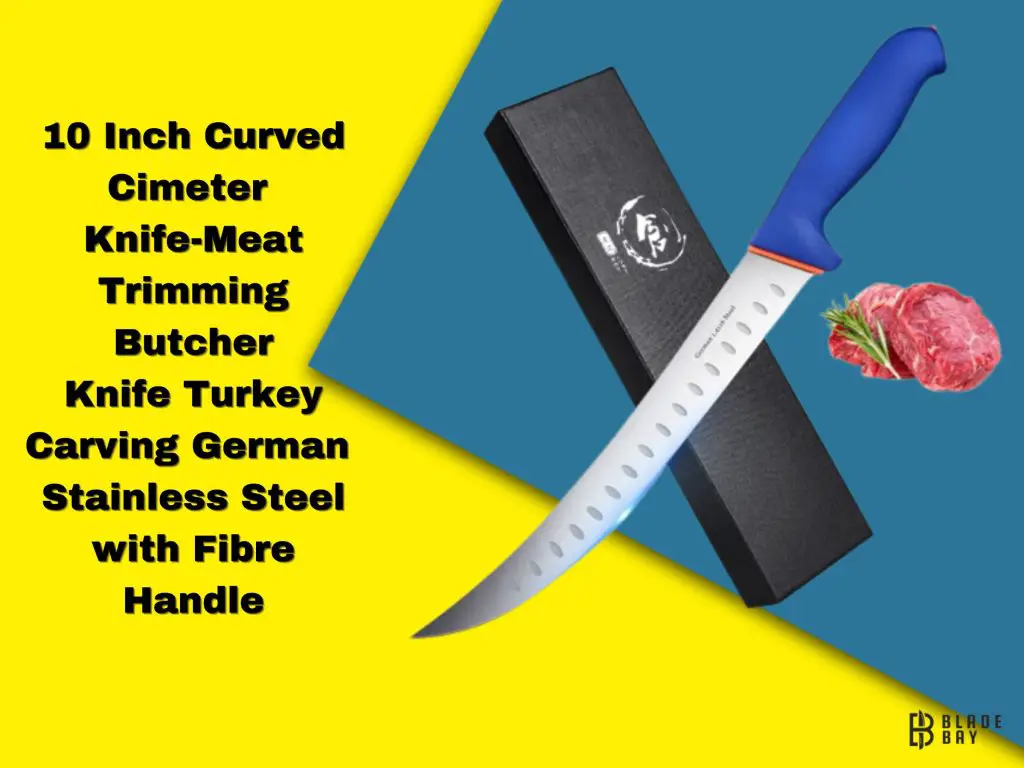
A carving knife is a type of kitchen knife that is designed specifically for slicing cooked meats, poultry, and roasts.
This knife has a long, narrow blade that tapers to a sharp point, making it ideal for slicing through large cuts of meat with ease.
The blade is also typically flexible, allowing it to easily navigate around bones and other obstacles.
One of the most popular types of carving knives is the traditional carving knife.
This knife has a long, thin blade that is ideal for carving larger cuts of meat, such as ham, turkey, or roast beef.
The blade is typically between 8 and 14 inches long, making it easy to slice through even the thickest cuts of meat.
The traditional carving knife is also known for its precision and control, making it a favorite among professional chefs and home cooks alike.
Another type of carving knife is the electric carving knife. This knife uses a motorized blade to make slicing even easier.
With an electric carving knife, you can quickly and easily carve through even the toughest cuts of meat with minimal effort.
These knives are especially useful for those who frequently entertain or cook large cuts of meat.
What is a Chef Knife?
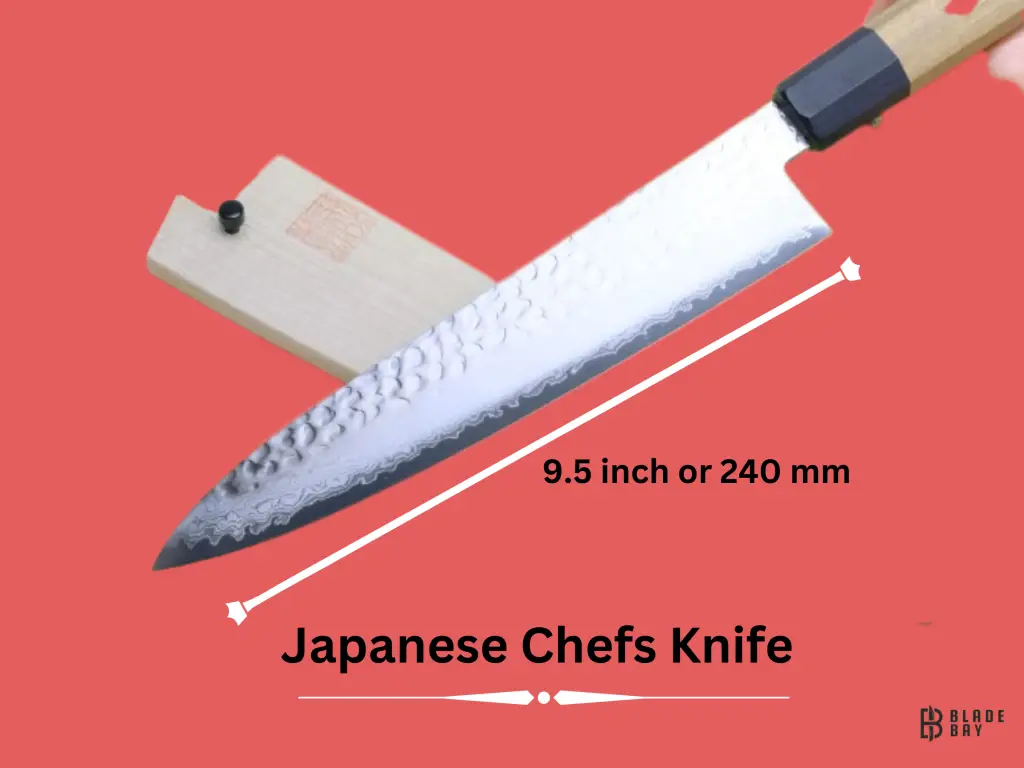
A chef knife is an essential tool for any serious cook. It is a multi-purpose knife that can be used for a variety of tasks in the kitchen.
Chef knives typically have a wide blade that tapers to a point, allowing for a rocking motion that makes chopping and slicing easier.
The blade is also curved, which makes it ideal for slicing meats and vegetables.
One of the most important features of a chef knife is its weight.
A good chef knife should have a balanced weight distribution between the blade and handle, which makes it easier to control and reduces the risk of injury.
The blade itself is usually made of high-carbon stainless steel, which is durable and resistant to corrosion.
There are many different types of chef knives available on the market, each with its own unique features and benefits.
One popular type is the Japanese chef knife, which is known for its sharpness and precision.
Another type is the German chef knife, which is known for its durability and versatility.
Aside from the general chef knife, there are also specialty chef knives such as the Santoku knife, which is a Japanese-style knife that is similar to a chef knife but has a shorter blade and is more versatile when it comes to chopping, slicing, and dicing.
Another type is the Nakiri knife, which is a Japanese-style knife specifically designed for slicing and chopping vegetables.
It has a straight blade that allows for precision cutting and a thin blade that reduces drag while slicing through vegetables.
Carving Knife vs Chef Knife – A Quick Comparison

Choosing the right knife can make all the difference in the kitchen. Two of the most popular types of knives are the carving knife and the chef knife.
While they may seem similar, they each have unique features that make them better suited for certain tasks.
Now, we’ll take a closer look at the carving knife vs chef knife debate and compare their blade design, handle, blade length, knife weight, use cases/purpose, and price difference.
Carving Knife
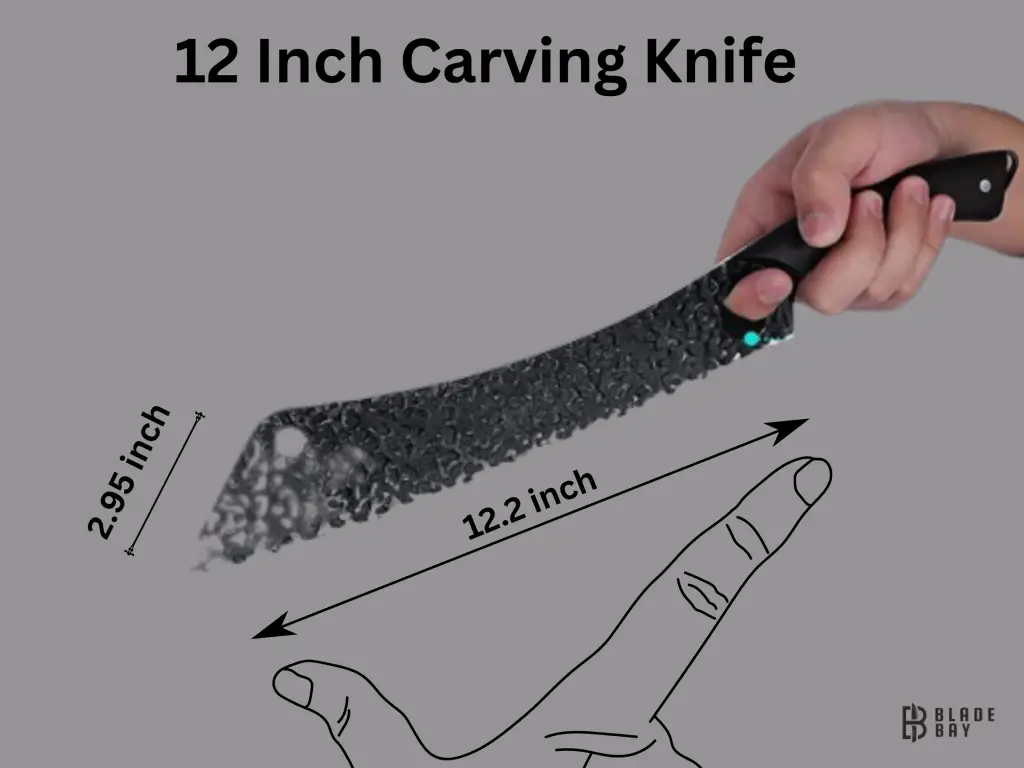
Blade Design: A carving knife typically has a long, thin blade with a pointed tip that is designed for precision cutting.
The blade is usually slightly curved, which helps to guide the knife along the contours of the meat.
Handle: The handle of a carving knife is usually straight and narrow, which makes it easier to grip and control.
Some carving knives have a bolster, which is a thick section of metal between the blade and handle that adds balance and stability.
Blade Length: A carving knife typically has a blade length of around 8-14 inches, which makes it ideal for slicing meats and poultry.
Knife Weight: A carving knife is usually lightweight, which allows for precise cutting and reduces hand fatigue.
Use Cases/Purpose: A carving knife is designed for slicing meats, poultry, and fish into thin, even slices. It is also useful for carving larger vegetables like pumpkins and melons.
Price Difference: Carving knives are usually more expensive than chef knives due to their specialized design and higher quality materials.
Chef Knife
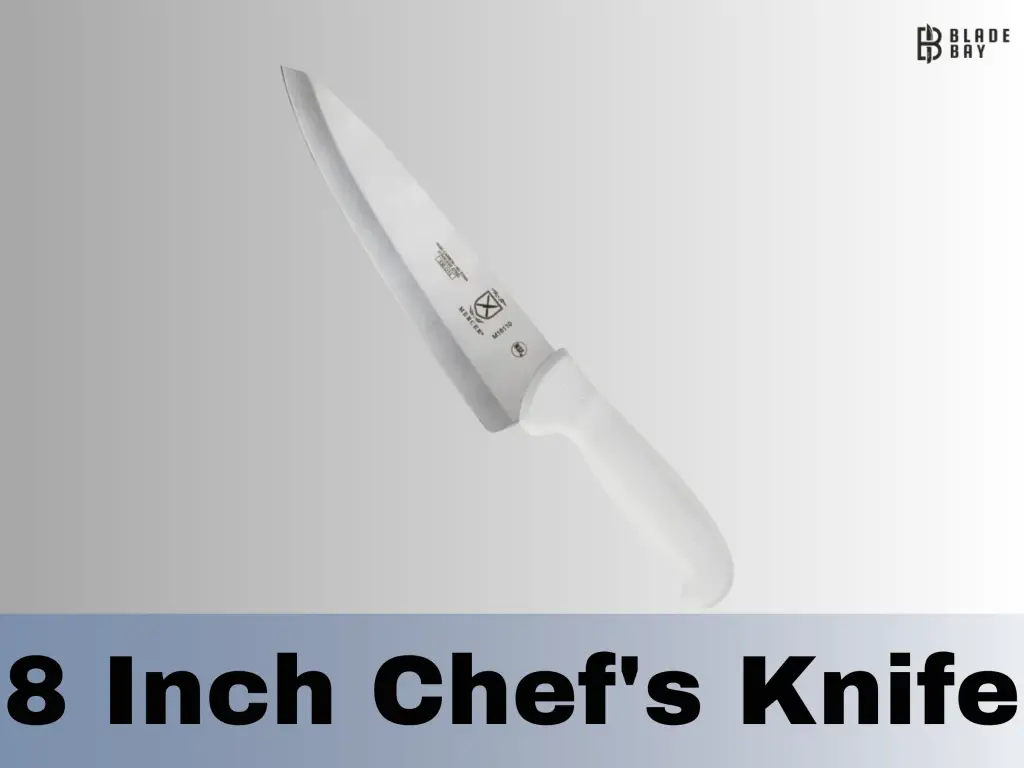
Blade Design: A chef knife has a wider blade that tapers to a point, which allows for a rocking motion that makes chopping and slicing easier.
The blade is usually slightly curved, which makes it ideal for slicing meats and vegetables.
Handle: The handle of a chef knife is usually wider and more ergonomic than a carving knife, which makes it easier to grip and control.
Blade Length: A chef knife typically has a blade length of around 6-12 inches, which makes it ideal for a variety of cutting tasks.
Knife Weight: A chef knife is usually heavier than a carving knife, which provides more control and reduces the need for excessive force.
Use Cases/Purpose: A chef knife is a versatile kitchen tool that can be used for a wide range of cutting tasks, including chopping vegetables, slicing meats, and mincing herbs.
Price Difference: Chef knives are usually less expensive than carving knives due to their more general-purpose design and lower quality materials.
What are the Pros and Cons of Using a Carving Knife and Chef Knife
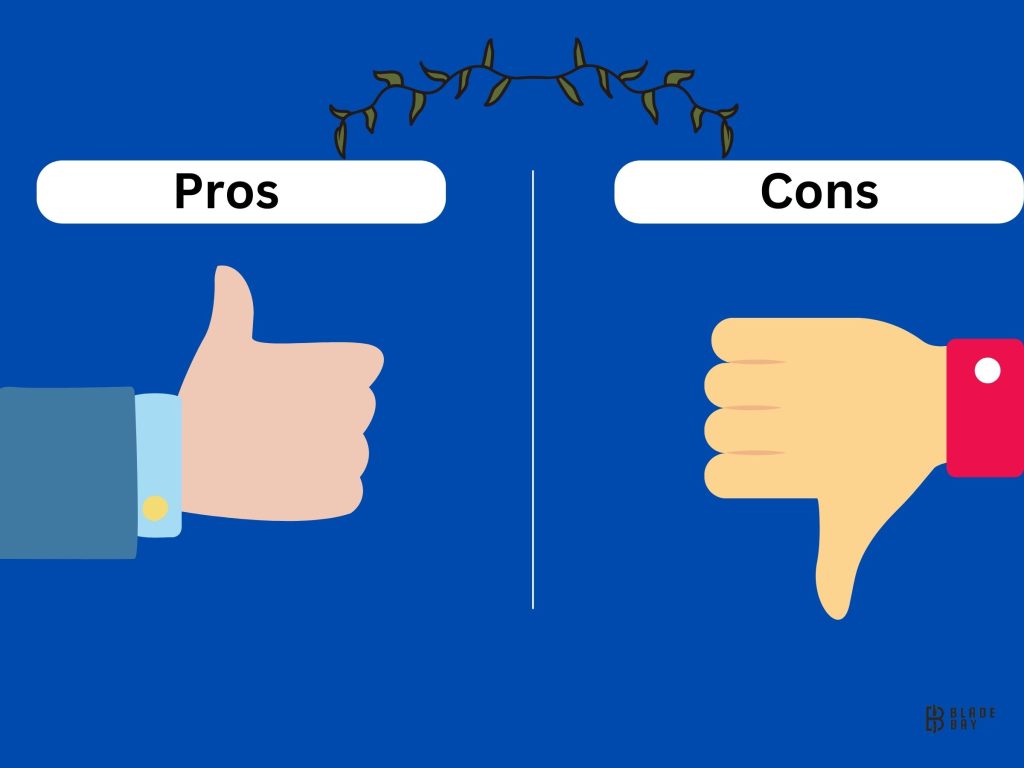
Carving Knife
Pros:
- Precise Slicing: A carving knife’s long, narrow blade allows for precise slicing of meats and other foods. This can be particularly useful when you need to make thin slices of meat for a dish.
- Presentation: Carving knives are often used to create beautifully arranged platters of meat, fish, and poultry. The long, thin slices that a carving knife produces can be arranged in an aesthetically pleasing manner, making your dishes look more appealing.
- Control: Carving knives are designed to provide a high level of control when slicing through foods. This can be especially helpful when working with delicate or intricate dishes that require precision.
- Versatility: While carving knives are primarily used for meat and poultry, they can also be used to slice through other foods such as vegetables, bread, and fruits.
Cons:
- Limited Use: While a carving knife
is useful for slicing meats and poultry, it may not be the best tool for
other tasks. For example, it may not be ideal for chopping vegetables or
slicing through bread.
- Size: The long, narrow blade of a
carving knife can make it difficult to store and handle. It may also be
too large for some kitchen tasks.
- Maintenance: Because of its size
and shape, a carving knife may require more maintenance than other knives
in your kitchen. It may need to be sharpened more frequently and may be
more difficult to clean.
- Cost: A high-quality carving knife
can be expensive, and it may not be practical for home cooks who only use
it occasionally.

Chef Knife
While there are many benefits to using a chef knife, there are also some potential drawbacks. Here, we will explore the pros and cons of using a chef knife.
Pros:
- Versatility: A chef knife can be used for a wide range of tasks, making it a versatile tool in the kitchen. Whether you need to chop vegetables, slice meat, or mince herbs, a chef knife can handle the job.
- Efficiency: The design of a chef knife allows for efficient cutting and chopping. The wide blade and curved shape make it easy to slice through even tough meats and vegetables, while the pointed tip allows for precision cutting.
- Comfort: A well-designed chef knife is comfortable to hold and easy to use. The weight of the blade is balanced with the handle, making it easy to control and reducing the risk of injury.
- Durability: A high-quality chef knife can last for years, making it a good investment for any home cook or professional chef.
Cons:
- Cost: A good quality chef knife can be expensive, which may be a deterrent for some home cooks.
- Maintenance: A chef knife needs to be maintained properly to ensure that it stays sharp and in good condition. This requires regular sharpening and honing, which can be time-consuming.
- Safety: Chef knives are sharp and can be dangerous if not used properly. It is important to use caution when using a chef knife and to always keep it out of the reach of children.
- Learning Curve: Using a chef knife takes some practice and skill. It can take time to get used to the weight and balance of the knife, and to develop the proper technique for cutting and chopping.
Tips and Tricks for Using a Carving knife and Chef knife

Carving Knife:
When using a carving knife, it’s important to have a steady hand and to make slow, deliberate cuts. Here are some tips to help you get the most out of your carving knife:
- Use a carving fork to hold the meat in place while you slice. This will help keep the meat steady and prevent it from slipping around on the cutting board.
- Make sure the knife is sharp. A dull blade will make it difficult to make clean cuts, and can actually be more dangerous than a sharp blade.
- Use a sawing motion to slice through the meat. Start at the thickest end of the meat, and work your way towards the thinner end. This will help ensure that your slices are even.
- Let the knife do the work. Don’t try to force the blade through the meat – instead, use a gentle sawing motion and let the knife slice through the meat on its own.
- Clean the blade between slices. This will help prevent the meat from sticking to the blade, and will make it easier to make clean, even cuts.
Chef Knife:
Here are some tips for using a chef knife effectively:
- Use a proper grip. Hold the knife firmly with your thumb and index finger on the blade, and your other fingers wrapped around the handle.
- Use a rocking motion to chop and dice. Place the tip of the blade on the cutting board, and rock the blade back and forth as you slice through the food.
- Use a slicing motion for long, thin cuts. Hold the food with your non-dominant hand, and slice through it with a smooth, sweeping motion.
- Keep the blade sharp. A dull blade will make it difficult to make clean cuts, and can be more dangerous than a sharp blade.
- Use a cutting board. Never cut directly on a countertop or other hard surface – this can damage the blade and create a safety hazard.
The Care Guide for Carving and Chef Knife

Like any other tool, knives require proper care to maintain their sharpness and longevity. Here’s a care guide for your carving and chef knives to help you keep them in top condition.
- Hand Washing
Always hand wash your knives with warm water and soap after every use.
Avoid using the dishwasher as it can cause damage to the blade and handle.
Also, be careful when washing the blade and never place your fingers near the sharp edge.
Once you’ve washed the knife, dry it immediately with a clean towel.
2. Sharpening
A dull knife can be dangerous to use as it requires more force to cut through food, increasing the risk of slipping and injuring yourself.
Keep your knife sharp by sharpening it regularly using a honing steel or sharpening stone.
A honing steel can be used to realign the blade’s edge, while a sharpening stone can be used to sharpen the blade.
Remember to hold the blade at the correct angle and to use smooth, consistent strokes.
3. Storage
Proper storage is crucial to prevent your knives from getting damaged or dull.
Always store your knives in a knife block or on a magnetic strip, with the blade facing upwards.
This prevents the blade from coming into contact with other objects and keeps the edge sharp.
Avoid storing your knives in a drawer, as this can cause the blades to become dull or even chipped.
4. Cutting Boards
Using the right cutting board can also help maintain your knife’s sharpness. Avoid using glass or metal cutting boards, as they can damage the blade.
Instead, use a wooden or plastic cutting board that’s easy on the blade. Also, remember to never cut on hard surfaces like granite or marble countertops, as this can damage the blade.
5. Maintenance
Regular maintenance is essential to keep your knives in top condition. Check the blade for any signs of damage, such as chips or cracks, and replace the knife if necessary.
Also, make sure the handle is secure and not loose. A loose handle can be dangerous to use as it can come off while cutting.
Carving Knife Vs Chef Knife: Which One to Choose?

When it comes to selecting a knife for your kitchen, it’s essential to consider the intended purpose.
While there are many different types of knives available, two of the most popular options are carving knives and chef knives.
Both knives have distinct characteristics that make them suitable for specific tasks.
A carving knife is a long, thin blade with a pointed tip that’s designed for slicing cooked meats.
According to professional chefs, a carving knife is the perfect tool for making thin, even slices of roasted turkey, ham, or beef. It’s also ideal for slicing fruits and vegetables, such as watermelon or squash.
The blade is usually between 8 and 14 inches long, and it’s flexible enough to glide smoothly along the surface of the food without tearing it.
Some of the best carving knives on the market include Wusthof Classic 10-Inch Carving Knife and Victorinox Swiss Army Cutlery Fibrox Pro Carving Knife.
On the other hand, a chef knife is a versatile, all-purpose kitchen knife with a broad blade that’s used for chopping, slicing, and dicing.
According to professional chefs, a chef knife is the most important tool in any kitchen. It can handle everything from cutting through bones to mincing herbs.
The blade is usually between 6 and 12 inches long, and it’s sturdy enough to cut through tough ingredients without bending or breaking.
Some of the best chef knives on the market include Global G-2 8-Inch Chef’s Knife and Wusthof Classic 8-Inch Chef’s Knife.
So, which one should you choose? Ultimately, it depends on your specific needs.
If you frequently cook large cuts of meat, a carving knife may be the better choice. It’s specifically designed for that task and will make your job easier and more efficient.
However, if you’re looking for a versatile, all-purpose kitchen knife that can handle a variety of tasks, a chef knife is the way to go.
It will be your go-to tool for chopping, slicing, and dicing, and you’ll find yourself reaching for it time and time again.
In conclusion, choosing between a carving knife and a chef knife comes down to the intended purpose.
If you’re looking for a knife that’s specifically designed for slicing cooked meats, a carving knife is the way to go.
However, if you want a versatile, all-purpose kitchen knife that can handle a variety of tasks, a chef knife is the better choice.
Either way, investing in a high-quality knife is essential for any home cook or professional chef.
Choose a reputable brand, such as Wusthof or Victorinox, and take good care of your knife, and it will serve you well for years to come.
FAQ
1.Can You use a Chef’s Knife for Carving?
Ans: Yes, you can use a chef’s knife for carving, but it might not give you the best results. Chef’s knives have a wider blade, which is great for chopping and slicing, but can be less precise when it comes to carving meats or poultry. A dedicated carving knife will usually have a thinner, longer blade that can make more precise cuts.
2. Is Carving Knife Good for Meat?
Ans: Yes, a carving knife is a great tool for slicing meat. Its long, thin blade is designed to make clean cuts through large pieces of meat, like roast beef or turkey, without tearing or shredding the meat. This makes it easier to serve meat that looks attractive and is easy to eat.
3.What is the difference between chef knife and utility knife?
Ans: A chef knife is a versatile kitchen knife with a broad blade that tapers to a point. It’s designed to perform a range of tasks, including chopping, slicing, and mincing. A utility knife, on the other hand, has a smaller blade that is more narrow and straight. It’s great for smaller, more precise tasks like trimming meat or vegetables, or slicing bread.
4.Why do Carving Knives have Holes?
Ans: The holes in carving knives are called Grantons, and they serve a specific purpose. The Grantons create small air pockets between the blade and the meat, which helps to reduce friction and prevent the meat from sticking to the blade. This makes it easier to make precise cuts, and it also helps to keep the meat looking attractive by reducing tearing or shredding.


